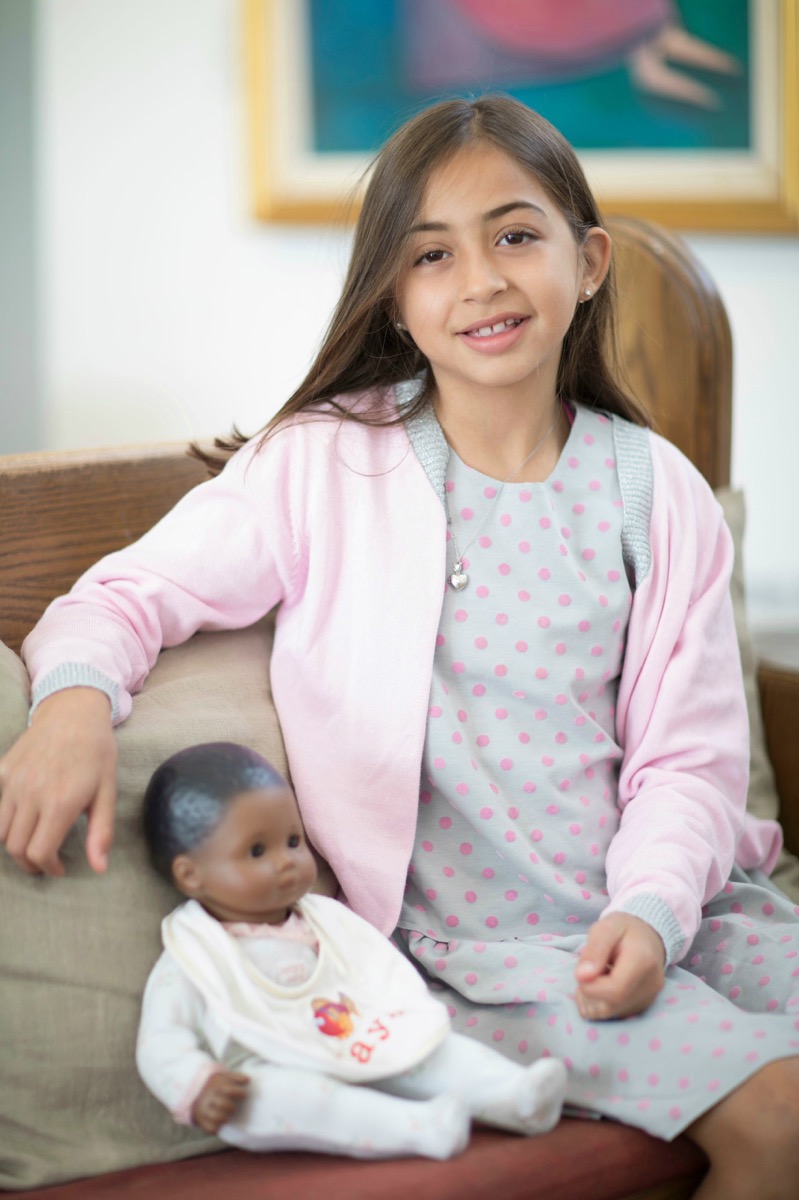
The Food and Drug Administration (FDA) made history in June when it approved Epidiolex, an oral medication that uses cannabidiol (CBD) — a chemical compound that is found in marijuana, but does not cause a high — for the treatment of Lennox-Gastaut syndrome and Dravet syndrome, two rare forms of epilepsy. (In addition to being the first FDA-approved drug derived from marijuana, Epidiolex is also the first drug approved specifically for Dravet syndrome.) In three clinical trials comprising more than 500 people, the pharmaceutical was shown to reduce the frequency of seizures associated with these conditions. In September, the Drug Enforcement Administration rescheduled Epidiolex to schedule 5 status, the lowest restriction classification for controlled substances, and manufacturer GW Pharmaceuticals says it will be available to patients in fall 2018.
This is the story of Maya Adache, a 10-year-old girl in South Florida with Dravet syndrome. Since taking Epidiolex, her seizures and mood swings have almost completely disappeared, according to her father, Adam Adache.
Maya had her first seizure when she was around six months old. She was feeding at the time with my wife, and we noticed her eyes roll to one side and she went limp. We thought she fell asleep eating, which babies sometimes do. It happened again, then a third time, and we started to get a little nervous. We called the pediatrician and he said it might be a febrile seizure, which is a seizure caused by fever.
We brought her in, and she was pretty coherent and acting like a normal six-month-old. Then we went home and it happened again, so the doctor said to take her to the ER for observation. That night she had a grand mal seizure — the full convulsions that people think of when they think of seizures — for well over an hour. They couldn’t control it. It was absolutely terrifying. Ultimately she was in the hospital for four days. The same thing repeated four months later. She continued to have seizures, so they started her on her first seizure medication.
She was very late to be diagnosed with Dravet, close to nine years old. About 80% of patients have a specific gene mutation associated with Dravet, but Maya didn’t. She was just diagnosed with intractable epilepsy for a long time, which means medications won’t work. Nothing worked. Some medications made it worse — some made it a lot worse — and some of them just didn’t help.
She was having 10 seizures a day. She had staring spells, where she would just stare off and she was really not coherent. She had seizures with convulsions. She had other ones where she would be doing something like smacking her lips, but she didn’t have any recognition and wouldn’t remember anything when she came to. She also has a lot of developmental delays, language delays and speech delays, which is very typical of people with Dravet syndrome. It comes with behavioral problems, too. She had mood swings that were close to impossible to deal with, because they came with no rhyme or reason.
When we heard about the clinical trial at Nicklaus Children’s Hospital in 2016, we were in desperation mode, to be honest. We were doing what desperate parents do: You go out there and read everything and hopefully make your own educated guesses. We learned about a trial for a drug derived from marijuana. I’m not a big proponent or advocate of marijuana, and you don’t want people thinking that you’re giving your child marijuana. But we figured, finally, there’s something coming out that’s actually regulated, a pharma-grade medicine that’s really doing it right. And it does not have the THC that gets you high, so that obviously made us feel better from the beginning. While we did think about the stigma associated with the name, we were really excited to try the product and we really believed it was going to help. We were ecstatic to be in the clinical trial.
It’s really impossible to tell which child it’s going to work for, but for us, it’s been great. I don’t want to say her seizures were eliminated, because we notice something occasionally, but sometimes we go weeks without seeing a seizure, and we haven’t seen any convulsions. She had a hard time sleeping and some stomach aches in the beginning, but the side effects have been minimal. It’s not a miracle drug, but it’s changed our family’s life for sure, simply because she’s a lot happier. I’m not going to say every once and while she doesn’t have a meltdown, but my other child has a meltdown every once and a while, too!
Assuming it keeps working well, it’s going to have a tremendous benefit to Maya and her quality of life. Already, it’s changed. We put her in camp and she stayed there the whole day; that never would have happened before. Maya ice-skated when she was little, and she struggled in it a lot, but it was something she latched onto. Now, she’s gotten even better at it. Just recently, she got a gold medal in a Special Olympics regional competition. She can skate for an hour, or two or three. She takes breaks, but she can do it. She’s loving it.
More Must-Reads from TIME
- Cybersecurity Experts Are Sounding the Alarm on DOGE
- Meet the 2025 Women of the Year
- The Harsh Truth About Disability Inclusion
- Why Do More Young Adults Have Cancer?
- Colman Domingo Leads With Radical Love
- How to Get Better at Doing Things Alone
- Michelle Zauner Stares Down the Darkness
Contact us at letters@time.com